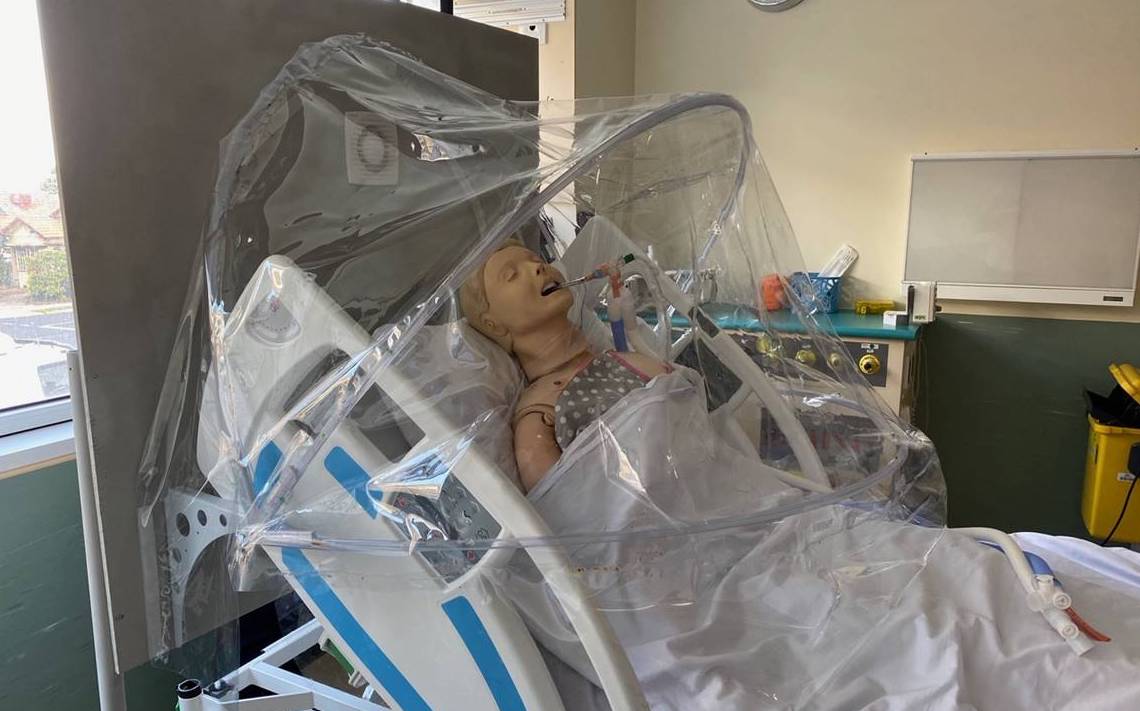9 April 2020
University of Melbourne researchers working in collaboration with Western Health have designed a personal ventilation hood for hospital beds to help contain the droplet spread of coronavirus (COVID-19) in intensive care units (ICUs).
The transparent, movable personal ventilation hood sucks air away from the patient while creating an effective droplet containment barrier. The device is also large enough to accommodate other medical equipment that might be attached to the patient.
Lead researcher and fluid mechanics expert from the University’s Melbourne School of Engineering, Professor Jason Monty, said it is known that COVID-19 is carried via droplets expelled by infected patients.
“The hood helps to confine bigger droplets to a known area around the patient while smaller droplets are sucked away through an attached ventilation system and filtered out through a high-efficiency particulate air filter,” Professor Monty said.

The device has been prototyped and tested by researchers in consultation with infectious disease experts at Western Health to ensure that its application is practical, hygienic, effective and safe. Image: supplied
Professor Monty was first approached by Associate Professor Forbes McGain, an intensive care specialist at Western Health, with ideas about how healthcare workers could be better protected by individually isolating critically ill patients with COVID-19.
Professor Monty and Associate Professor McGain then developed the concept of the hood. The device has since been prototyped and tested with a team of fluid dynamics researchers, in consultation with intensive care specialists, nurses and other infectious disease experts at Western Health to ensure that its application is practical, hygienic, effective and safe.
Patients trials are due to start at Footscray Hospital this week, with use on COVID-19 patients possible from next week.
Associate Professor McGain, who is also an honorary with the University of Melbourne, said that during the current pandemic, doctors, nurses and allied health professionals are working under increasing pressure and risk of cross-contamination.
“Our testing has shown that the hood allows healthcare workers to interact with their patients and get a visual sense of their condition through the clear plastic, but with a reduced risk of infection,” Associate Professor McGain said.
Melbourne School of Engineering Dean Professor Mark Cassidy welcomed the opportunity to support the healthcare sector during the present COVID-19 crisis.
“We are pleased that our researchers are able to apply their research-based skills to provide vital support for healthcare workers in this time of need,” Professor Cassidy said.
The prototype device has been made using readily accessible components at a low cost, making it suitable for low to middle income countries.
Western Health Chief Executive Russell Harrison said COVID-19 was putting unprecedented pressure on the healthcare system.
“It’s great that Western Health and the University of Melbourne have been able to work in partnership, and in such an agile way, to create a device to help protect healthcare staff working on the frontline,” Mr Harrison said.
Read the full media release here.



